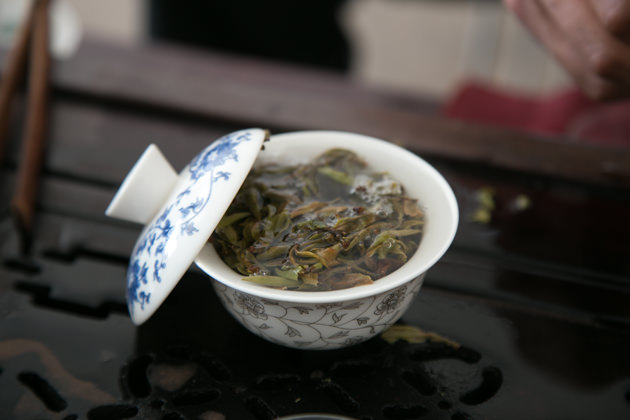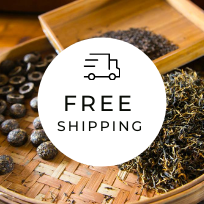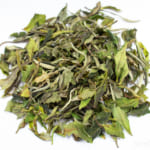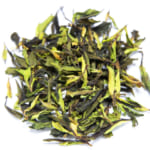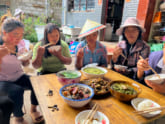- HOME >
- How to enjoy tea
Why do we rinse tea leaf?
- [2015.11.22] Posted By Akira Hojo
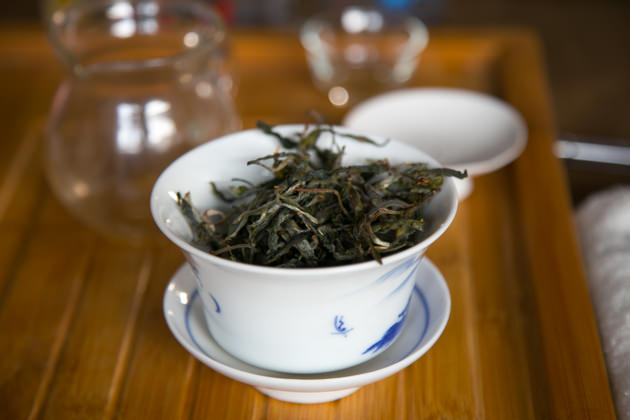
We often rinse tea leaf before we brew it. Do you really know the reason for it?
Some people say it is because Chinese tea is often contaminated by pesticide and the rinsing is cleansing process to get rid of it. Of course it is not true. If pesticide is used, it is applied in late spring or summer when weather becomes warmer and pests become an issue. The farmer will not apply pesticide on freshly geminated leaf in spring. The pesticide applied in late spring or summer is absorbed by tea through its root and it stays inside the cell. Technically, there is no way to remove pesticide by rinsing even if it is really used. So what actually is the reason to rinse tea?
3 reasons for rinsing tea leaf
From my point of view, there are three reasons why we rinse tea.
- To unfurl the tea leaf
- Maintain high brewing temperature
- For short time brewing
1. Open tea leaf
Some oolong teas, such as Taiwan oolong and Anxi oolong like Tie Guan Yin, are tightly rolled into ball shape. While Pu-erh tea is often compressed very hard into disc or brick shape. If we brew these teas without rinsing, water may not penetrate inside but only moisten the surface. This will result in very inconsistent brewing.

With rinsing once or twice, these teas will be loosen and unrolled. Usually, the better the quality, the faster the unrolling speed. We need to adjust the rinsing time according to the quality of tea.
2. Maintain high brewing temperature
The flavor and taste of fermented tea such as oolong and black tea are composed of substances like terpene and conjugated poly phenol. These substances are produced as a result of enzymatic oxidation. These substances have lesser affinity than poly phenol exists in non-fermented tea like green tea. Hence, it is important to get higher temperature to efficiently extract the substances when brewing fermented tea.
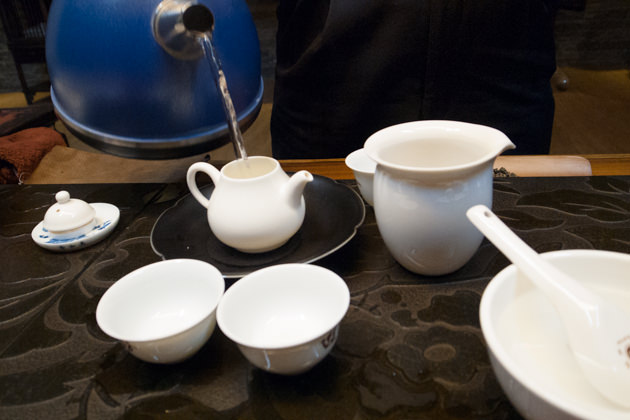
Many people would think that the temperature of boiling water is at 100 degree C. However, if we measure the actual temperature of hot water right after we stop heating, it is at about 95 degree C. Once it is poured into teapot, the hot water temperature drops about 10 degree C in summer and nearly 20 degree C in winter. In addition, dry tea leaf also contributes in cooling the water temperature to another 10 degree C. If no rinsing is carried out, you are actually brewing tea at 65 or 75 degree C. This is not hot enough at all to bring out the flavor and taste of fermented tea. Therefore, it is very important to warm up teapot with boiling water for 10 seconds, and again rinse tea leaf with boiling water for a few seconds. Usually, it is not very common to rinse black tea. However, some people rinse it if they practice Gong Fu brewing technique.
3. For short time brewing
The naturally farmed tea contains a lot of poly phenol or its oxide. Also as I mentioned above, the main taste component of fermented tea is also poly phenol oxide. In order to brewing these teas well, the key is how to extract these substances. Since these substances have lesser affinity with water, it is important to use water at higher temperature.

However, tea may be damaged if water temperature is too high. To minimize the damage, we ought to practice “high temperature and short time” brewing technique. It is said that high temperature and short time brewing gives lesser damage compared to lower temperature and long time brewing.
In order to achieve high temperature and short time brewing, we need some preparation. Firstly, warm up the teapot with boiling hot water for about 10 seconds. After pour in the tealeaf, rinse tealeaf once or twice swiftly, tealeaf will then unrolled and easier to extract its flavor and taste. Usually, after rinsing I put the lid back on and leave the tealeaf for about 10 seconds. The hot steam will remain inside the teapot. This steaming further helps tea leaf to be ready for subsequent brewing. With this method, we can get sufficient flavor and taste even if we keep entire brewing time in less than a few seconds. We can also practice the same technique for green or black tea. But the rinsing must be carried out as quickly as we can.
Related Articles
How to get the latest update on HOJO Tea?
1. Follow Twitter, 2. Click "Like" on Facebook, and 3. Subscribe in newsletter. You can have the latest tea news from HOJO Tea.
 Subscribe the Newsletter to enjoy the privileges
Subscribe the Newsletter to enjoy the privileges- You may receive a free sample upon purchase, or you may have the priority to purchase special products. So please remember to subscribe our newsletter as well as the social network.
- Yunnan Chun Jian Green Tea from High Mountain Gardens
- Yunnan Chun Jian Green Tea is now available.This tea is made from naturally grown leaves harvested from high mountain gardens at 2100m above sea level. It has a rich, long-lasting lingering aftertaste, comparable to raw Pu-erh tea. Yunnan as a Distinctive Tea Growing Region Over the past 20 years, we have explored a wide range …
- Limited Loose Leaf Release of 2025 Da Xue Shan Wild Raw Pu-erh Tea
- We have released the 2025 loose-leaf version of Da Xue Shan Wild Raw Pu-erh Tea.This tea comes from wild tea trees that grow naturally in the high mountains of Yunnan Province, at elevations above 2000 meters. This year, we were only able to secure a small quantity for retail, and the current release is available …
NEW ARTICLES
 Yunnan Chun Jian Green Tea from High Mountain Gardens
Yunnan Chun Jian Green Tea from High Mountain Gardens- Yunnan Chun Jian Green Tea is now available.This tea is made from naturally grown leaves harvested from high mountain gardens at 2100m above sea level. It has a rich, long-lasting lingering aftertaste, comparable to raw Pu-erh tea. Yunnan as a Distinctive Tea Growing Region Over the past 20 years, we have explored a wide range …
 Limited Loose Leaf Release of 2025 Da Xue Shan Wild Raw Pu-erh Tea
Limited Loose Leaf Release of 2025 Da Xue Shan Wild Raw Pu-erh Tea- We have released the 2025 loose-leaf version of Da Xue Shan Wild Raw Pu-erh Tea.This tea comes from wild tea trees that grow naturally in the high mountains of Yunnan Province, at elevations above 2000 meters. This year, we were only able to secure a small quantity for retail, and the current release is available …
 2025 Da Xue Shan Wild White Tea Now Available from Yunnan
2025 Da Xue Shan Wild White Tea Now Available from Yunnan- The 2025 harvest of Da Xue Shan Wild White Tea is now available. Crafted from truly wild Camellia taliensis trees growing naturally in the high-altitude forests of Yunnan, this tea offers a purity and character unique to its origin. This year’s unusually dry climate during the withering season was ideal, resulting in a floral and …
 Why Do Some Teas Taste Astringent? Exploring the Causes and Mechanisms of Astringency
Why Do Some Teas Taste Astringent? Exploring the Causes and Mechanisms of Astringency- Tea can range from having no noticeable astringency to possessing a very strong one. What causes this astringency? This article explores the causes and mechanisms behind astringency in tea. Causes of Astringency Astringency arises from the binding of tea components to proteins in the oral cavity, creating a sensation of tightness or dryness. The tongue …
 The Impact of Heat Sources on Tea Flavor
The Impact of Heat Sources on Tea Flavor- It is widely recognized that the material of a kettle plays an important role in shaping the taste of water for brewing tea. Yet, an often overlooked but equally significant factor is the type of heat source used to boil the water. Different heat sources, whether gas, electric, charcoal, or wood fire, can impart distinct …
 New Release of High Mountain White Tea
New Release of High Mountain White Tea- We are pleased to introduce our High Mountain White Tea, sourced from a unique tea garden with two key features: 1. Located at an altitude of 2200-2300m2. Completely wild and untended The ideal natural conditions of this garden result in tea of exceptional quality, offering a pure and gentle, nourishing taste. High Altitude and Wild …
 New Release of Da Xue Shan Wild White Tea 2024
New Release of Da Xue Shan Wild White Tea 2024- We have released the 2024 Da Xue Shan Wild White Tea Loose Leaf. This tea was produced under our direct supervision during our stay in Yunnan Province, ensuring meticulous production management on site. Definition of Wild Tea in Yunnan Province People in Yunnan strongly associate Camellia taliensis with wild tea, regardless of where it is …
 New Release of Wild Pu-erh Jasmine Pearl
New Release of Wild Pu-erh Jasmine Pearl- Out of curiosity, we decided to create a jasmine tea based on Da Xue Shan Wild Raw Tea. This resulted in an exceptionally rare tea, not only in Japan but also in China. Custom Production Network for Jasmine Tea At our store, we source various types of base teas from different regions during the spring. …
 2024 Overview: Our Yunnan White Tea Quality, Process, and Weather Insights
2024 Overview: Our Yunnan White Tea Quality, Process, and Weather Insights- One of the teas we’ve been focusing on in Yunnan Province is white tea. Historically white tea has been produced in both Fujian Province and Yunnan Province for a long time. While white tea from Fujian Province is well-managed during processing, we are dissatisfied with the quality of the raw materials due to the use …
 Yunnan’s Hospitality Culture: Expressed Through Meals
Yunnan’s Hospitality Culture: Expressed Through Meals- In China, as a form of greeting, it’s common to say “你吃饭了吗?” which means “Have you eaten?” However, in Yunnan Province, the phrase “吃饭” is often used in various situations, more like “Eat, eat,” serving as an invitation to share a meal. Yet, with prolonged exposure to Yunnan, one comes to understand that these meal …
Shop Info

Address:Lot No. T-215, 3rd Floor, The Gardens Mall, Mid Valley City, Lingkaran Syed Putra, 59200 Kuala Lumpur
Tel: +603-2287-4537
Business Hour: 10am to 10pm
Category
- New Arrival at HOJO Online Shop
- Featured Articles
- Newsletter
- Types of Tea
- Origin of Tea
- Teapot and Tea Equipment
- Tea Column
- How to enjoy tea
- Tea Processing
- How to choose quality tea
- Tea constituents and functional effect
- Safety of Tea
- Foods
- Tea Business Operation
- Hobby and Outdoor Activity
- Ranking of Tea
- Video
- FAQ
- Media Release
Profile

- AKIRA HOJO
- I invite you to experience my tea selections.I was born in Nagano, Japan. In university, I studied agricultural chemistry, and I have the master degree in food science. I worked in Japanese food industry for 10 years. I involved in R&D, QC and QA. As a factory manager, I implemented ISO9000 series and managed the factory.
- The Art of Tea Magazine
- We posted the article on “The Art of Tea Magazine No.9, the magazine is published in Taiwan. We featured some scientific view about the tetsubin
- New Straits Times
- The Malaysian National Newspaper, New Straits Times featured HOJO Tea on 17-Oct-2007.



